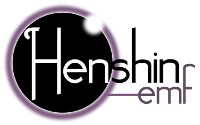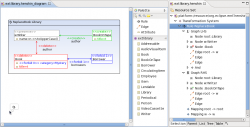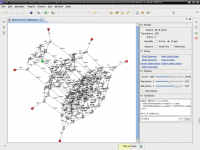Notice: this Wiki will be going read only early in 2024 and edits will no longer be possible. Please see: https://gitlab.eclipse.org/eclipsefdn/helpdesk/-/wikis/Wiki-shutdown-plan for the plan.
Difference between revisions of "Henshin"
(→Getting started) |
|||
| Line 1: | Line 1: | ||
[[Image:Henshin_small.png|200px|right|Henshin logo]] | [[Image:Henshin_small.png|200px|right|Henshin logo]] | ||
| − | ''Important links:'' [[Henshin/Installation instructions|Installation instructions]] | [[Henshin/Getting started|Getting started]] | [[Henshin/Examples|Examples]] | + | ''Important links:'' [[Henshin/Installation instructions|Installation instructions]] | [[Henshin/Getting started|Getting started]] | [[Henshin/Examples|Examples]] | [[Henshin/FAQ|FAQ]] |
'''Henshin''' is an in-place model transformation language for the [[Eclipse Modeling Framework]] (EMF). It supports direct transformations of EMF model instances (endogenous transformations), as well as generating instances of a target language from given instances of a source language (exogenous transformations). Its main features are: | '''Henshin''' is an in-place model transformation language for the [[Eclipse Modeling Framework]] (EMF). It supports direct transformations of EMF model instances (endogenous transformations), as well as generating instances of a target language from given instances of a source language (exogenous transformations). Its main features are: | ||
| Line 31: | Line 31: | ||
* [http://www.eclipse.org/modeling/emft/henshin Official website] | * [http://www.eclipse.org/modeling/emft/henshin Official website] | ||
| − | |||
* [[Henshin/Projects|Projects]] | * [[Henshin/Projects|Projects]] | ||
* [[Henshin/Committer Instructions|Committer Instructions]] | * [[Henshin/Committer Instructions|Committer Instructions]] | ||
Revision as of 07:22, 9 February 2023
Important links: Installation instructions | Getting started | Examples | FAQ
Henshin is an in-place model transformation language for the Eclipse Modeling Framework (EMF). It supports direct transformations of EMF model instances (endogenous transformations), as well as generating instances of a target language from given instances of a source language (exogenous transformations). Its main features are:
Basic transformation definition and execution
- Rule-based transformation paradigm with units for managing control flow of rules
- Graphical and textual syntax, based on a transformation meta-model
- Native support for endogenous transformations; support of exogenous transformations via traces
- Efficient in-place execution of transformations using a dedicated interpreter with debugging support
Analysis
- A performance profiler to identify slow spots
- Support for conflict and dependency analysis
- State space analysis for verification
Advanced rule definition
- Support for rule variants
- Support for automated rule generation
- Support for generating application conditions from OCL constraints
Integration with other tools
- Integration with Xtext
- Support for massive parallel rule execution using Apache Giraph



